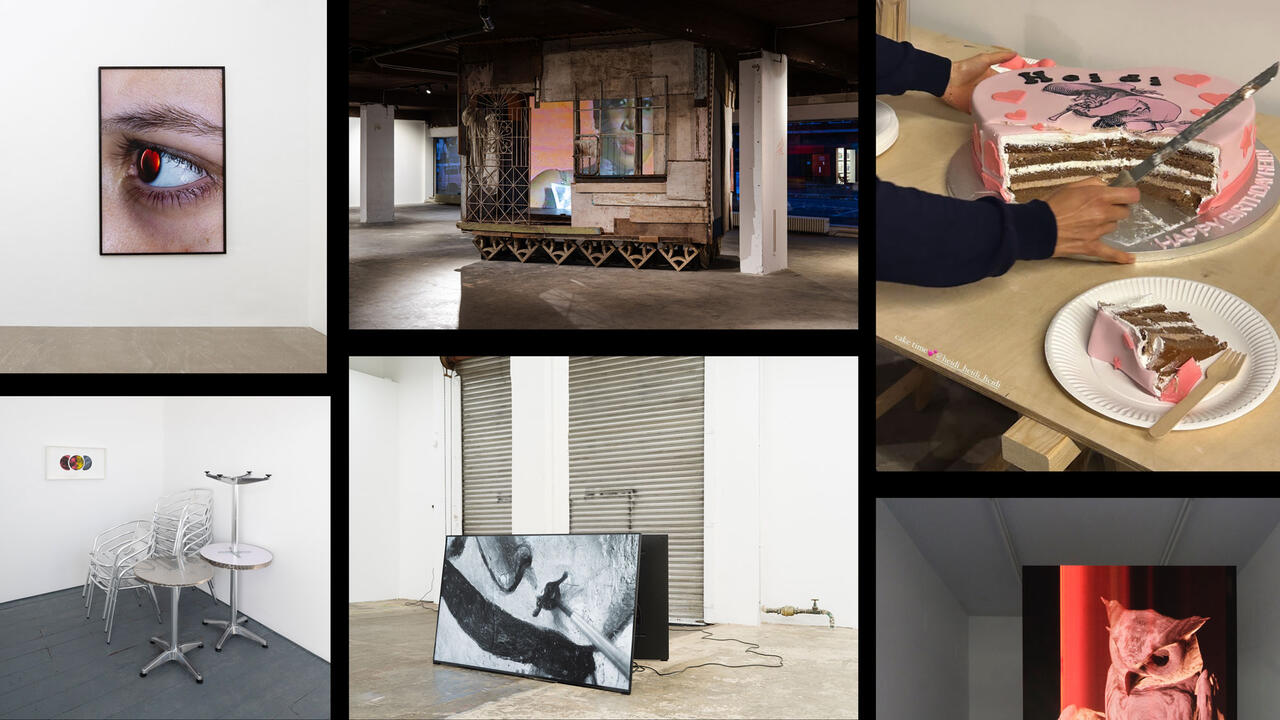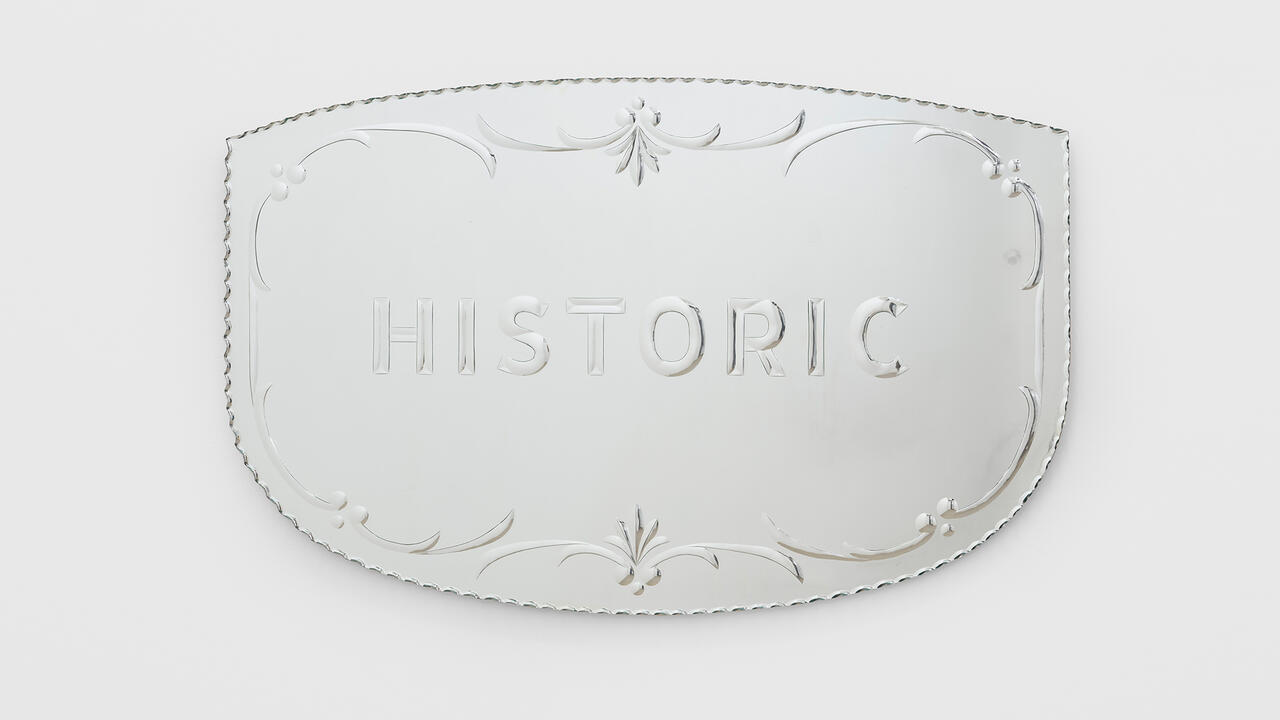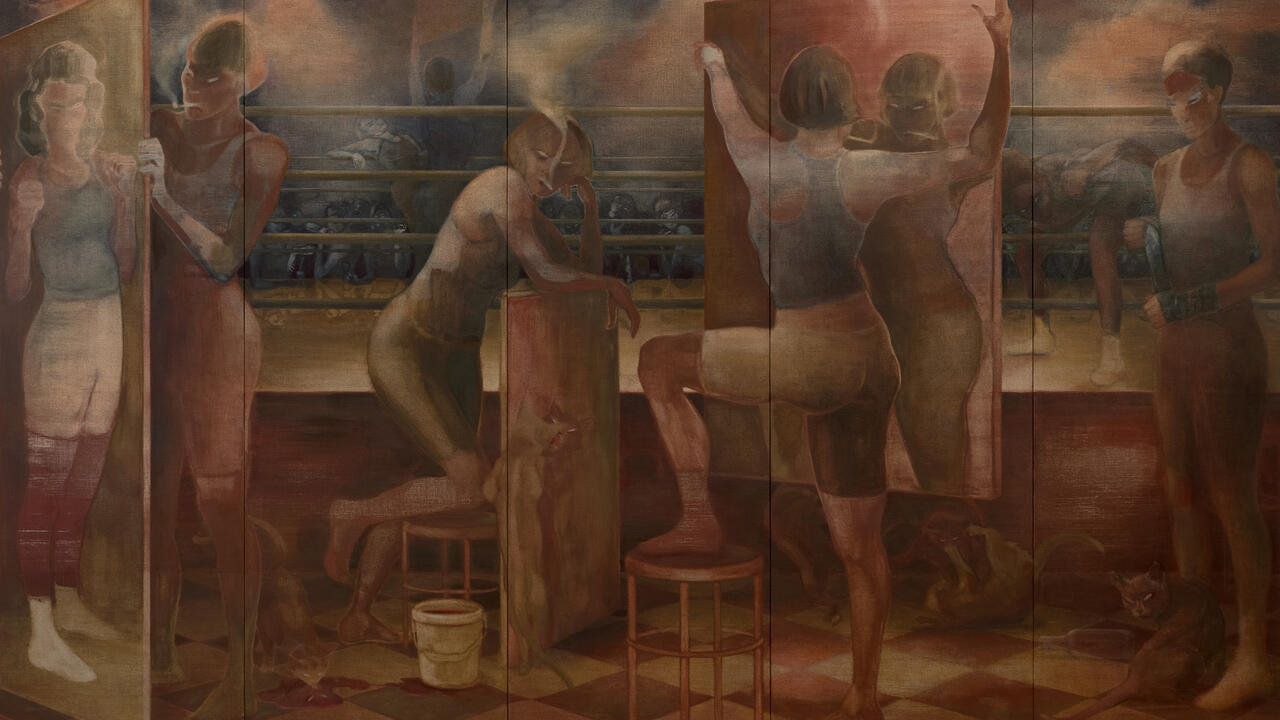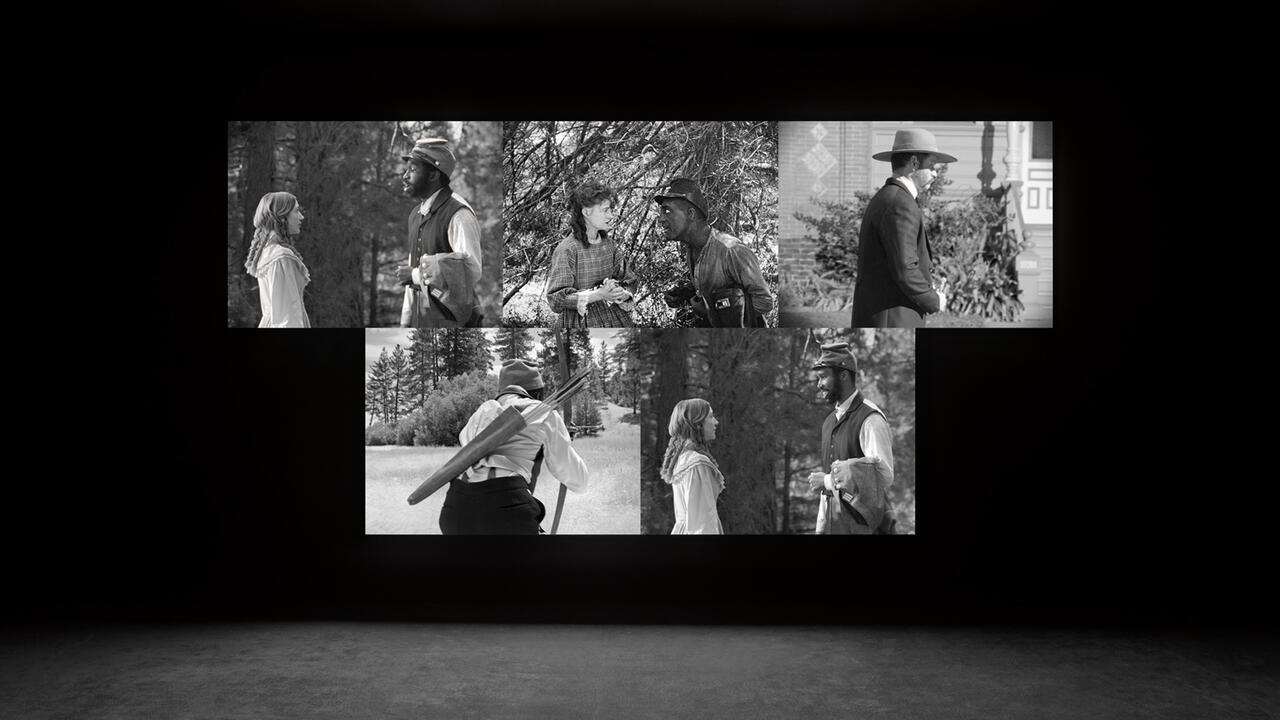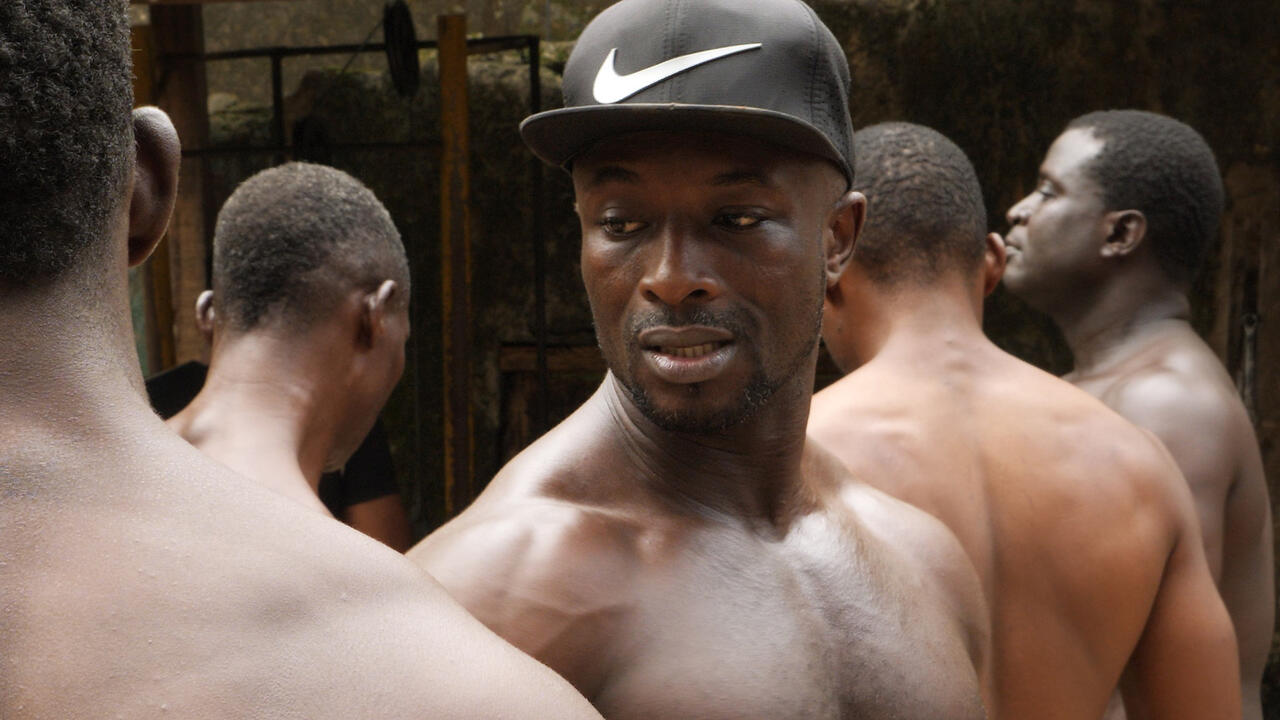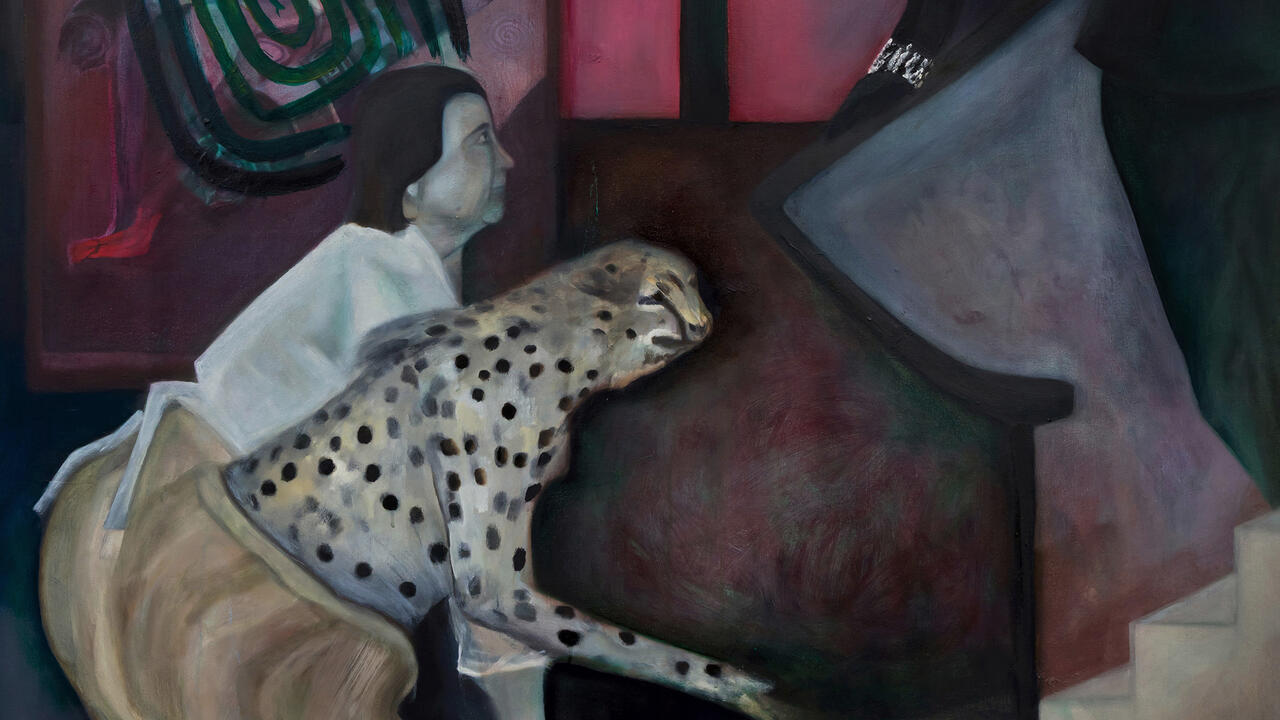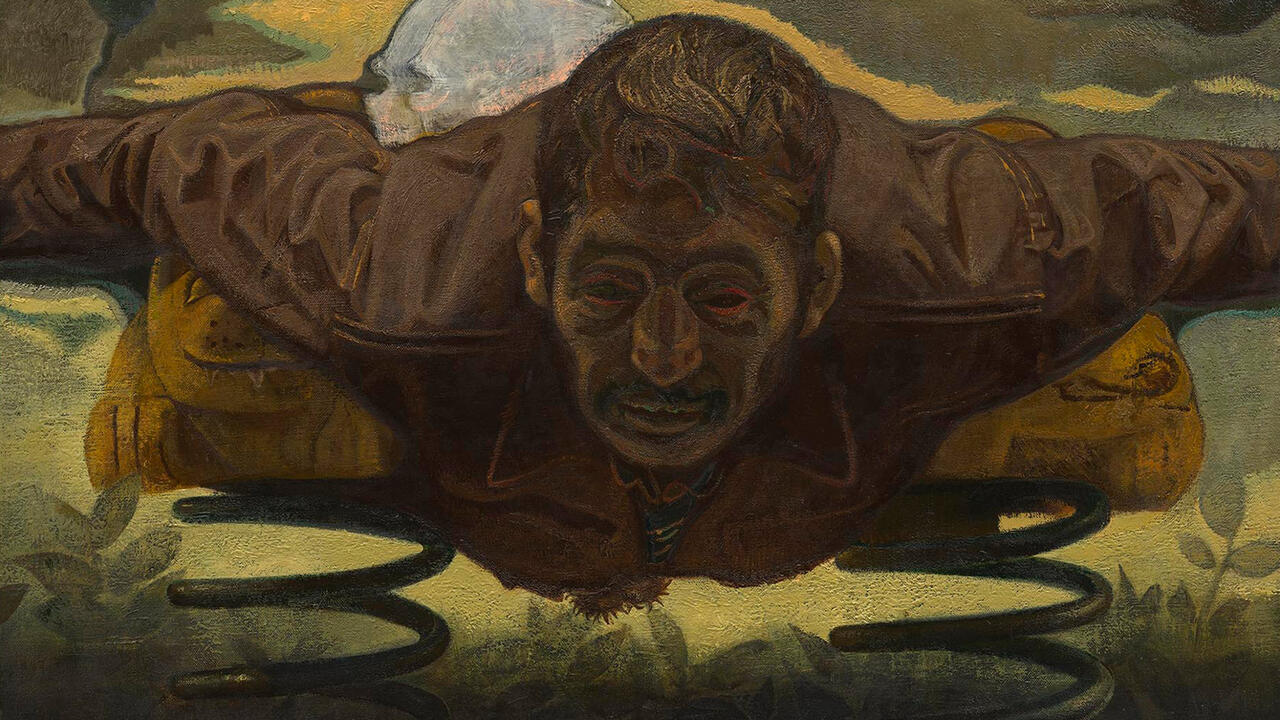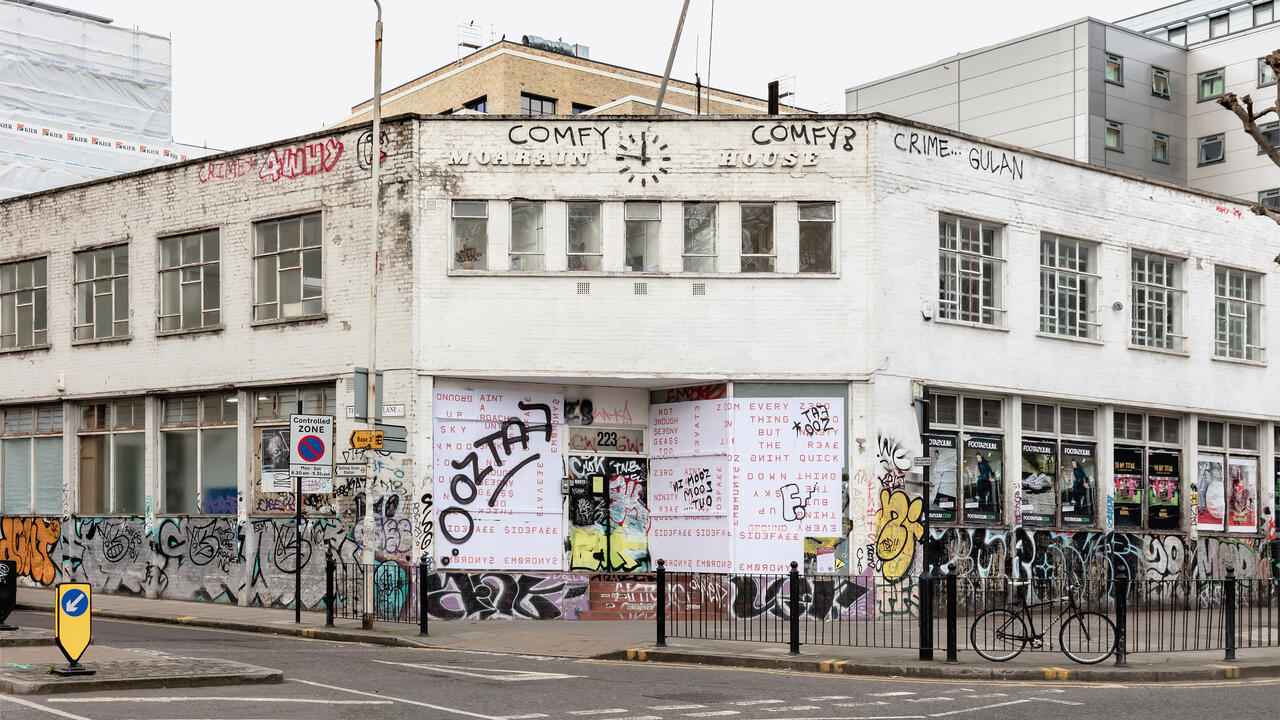Yuri Pattison on the Sinister Undertone of Economic Exploitation
During his residency at Chisenhale Gallery, the artist focuses on the eerie blurring of traditional boundaries between labour and social interaction
During his residency at Chisenhale Gallery, the artist focuses on the eerie blurring of traditional boundaries between labour and social interaction

As I wandered around the dustsheet-covered chairs and polycarbonate desks of ‘user, space’, an atmospheric installation by Yuri Pattison that emulates an empty office environment, I found myself wondering where all the workers had gone. Here were the desks, the computers and the power outlets (communal table for user, space, all works 2016); there was the ‘hexayurt’, a hooded booth built from Dexion shelving and furnished with beanbags and air-filtering plants, in which I could easily imagine a brainstorming session taking place (half relief shelter zone for user, space [hexayurt configuration]). Everything was meticulously arranged to facilitate productivity. But who would make use of it? Aside from the finger-marks that trailed through a dust-coated desk, no active human presence (aside from the gallery’s visitors) could be discerned. Instead, computer units quietly blinked and hummed, a reminder of the non-human labour that continually occurs around us, whether we notice it or not. Had the workers been sacked, rendered obsolete by these inscrutable black boxes? Or were they due to arrive any moment and hot-desk their way through a coding session? The eerie ambiguity of questions such as these enhance the haunting atmosphere of the work.

‘User, space’ is the result of an 18-month residency at Chisenhale Gallery, during which Pattison visited various coworking spaces in Tech City, a cluster of web and technology start-ups based around Old Street roundabout in east London. Pattison’s installation emulates these sleek spaces, many of which draw inspiration from histories of modernist design. The artist’s choice of replica Eames ‘DSW’ dining chairs, for instance, evokes the East Coast-American modernism that continues to influence the design ethos of Silicon Valley. In contrast, the stark industrial shelving units lining the gallery’s walls brought to mind the exploitative conditions of Amazon warehouses, in which workers are either drastically underpaid or being replaced by robots.

Pattison has spoken of the ambivalence he feels towards the . Rather than offer a polemical critique of this economy – the arguments against hardly need explaining to anyone who has worked as a precarious freelancer – the artist reproduces the work environments that make this economy possible. The difference here is that Pattison actively wants the viewer to feel a sinister undertone of economic exploitation.

The materials used throughout ‘user, space’ – predominantly gleaming metal and transparent plastic – enable disparate objects to visually harmonize with one another, forming a convincing doppelgänger of a functioning office. Throughout the work, however, understated artistic touches destabilize this uniformity. These interventions evoke the human cost of the booming tech industry by associating it with death. A skeletal hand, cast in transparent plastic, can be glimpsed in a Perspex box. Video monitors loop CGI animations and Steadicam recordings of vacant offices, enhancing the haunted mood. The most subtly disturbing intervention takes the form of another Perspex box filled with water. At first sight, I thought the white crud littering the bottom of the box was pulverized paper. Closer inspection revealed tiny, white figurines: the shrunken, petrified corpses of the vanished white-collar workers, perhaps.
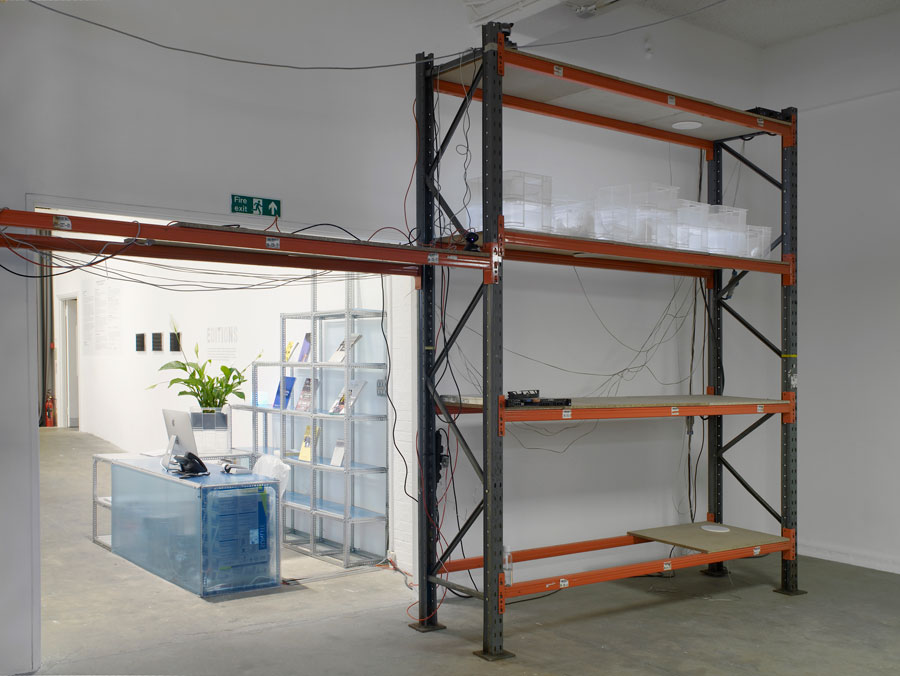
In the disconcerting absence of humans, computer processors become active elements in the artwork. These enigmatic boxes are dotted throughout the gallery, their black carapaces concealing high-power hardware that hums and whirrs in the background. Overhead, the white ceiling is festooned with trailing electrical wires, while fluorescent panels flick on and off to a computer-controlled schedule. Was I a passive spectator here, or a potentially active member of an overworked, underpaid workforce on the brink of obsolescence? In Pattison’s unsettling installation, technology feels essential while humanity is optional: the lights are on but nobody’s home.








